Fireplaces once were the sole means of heating homes, using wood as the fuel source. Fireplaces are still used for heating, but probably more so for the look and the feel they provide. Nothing beats that feeling of curling up by the fire on a cold winter’s night.
Below we look at the types of fireplaces, alternatives and developments in technology.
The Quick Take:
- Replacing fireplaces depends on frequency of use
- Traditional wood fireplaces are terrible for the environment and our health, but, perhaps can be kept if they are only used infrequently. They should be replaced if used as the main heating source
- Gas fireplaces should be replaced upon expiry or if the homeowner is planning to live in the home for a long time (>15 years)
- For people considering a new fireplace in a new build or renovation, we suggest starting with an electric fireplace. If they don’t provide the required feeling, a pellet fireplace might be the next best option
- Watch this space – we have spoken with a number of industry insiders and the Victorian government’s ban on gas connections to new houses will help fuel (pun intended) a raft of technological improvements over the next few years
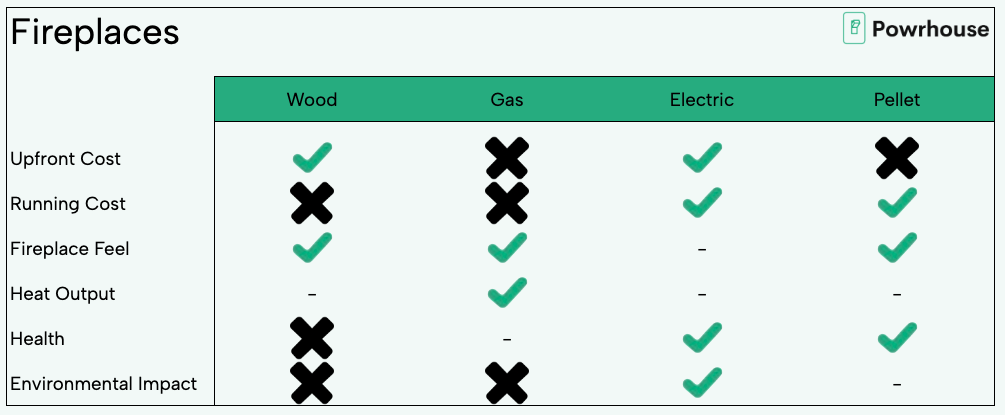
Wood Fireplaces
Wood fireplaces are terrible for both the environment and our health. Both the Environmental Protection Agency and the Australian Government state that wood fireplaces cause both environmental pollution in and outside the home.
“Some pollutants from wood heater smoke, such as particulates and formaldehyde, are carcinogenic.” (that is, they cause cancer)
In the US, the Children’s Health Environmental Coalition cites a raft of studies that show how children living in wood-burning households experience “higher rates of lung inflammation, breathing difficulties, pneumonia, and other respiratory diseases.” It might only be coincidence, but my wife suffers from asthma and she grew up in a cold house warmed by a wood fireplace.
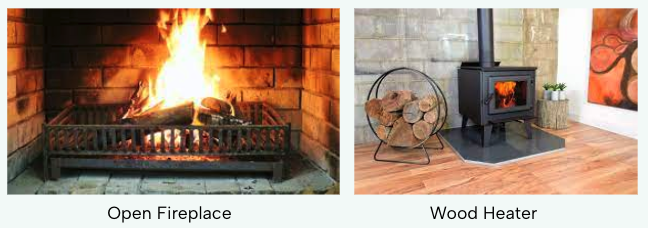
An open fireplace is open, it has no glass between you and the fire. A wood heater on the other hand has a glass door that stops the smoke coming out into the living room. Wood heaters are more efficient and take longer to burn the wood.
Wood fireplaces come in last in order of preferred fireplace options. They are horribly inefficient – the vast majority of energy goes straight up the chimney! However, in line with being Powrhouse Practical, we think it’s okay to keep them as long as they are not the main source of heating and are only used occassionally. We don’t think it’s practical to suggest replacing wood heaters at a cost of a couple of thousand dollars if they are only used say a dozen times a year. For example, some of our clients only use their wood heater when they have guests over.
Please see this guide from the EPA on how best to use them.
Gas Fireplaces
Gas fireplaces are both effective in warming a space and aesthetically pleasing. If we appreciate that every fireplace is trying to replicate that warm look of something burning, gas fireplaces certainly achieve that aim. They can also easily be turned up and down to provide more or less warmth.
Gas fireplaces are more efficient than wood fireplaces but less efficient than electric fireplaces. Being gas powered, they need to be flued. Gas fireplaces are expensive, much more expensive than electric alternatives. Gas fireplaces also need to be serviced every two years as with all things gas, there is the risk of leaks.
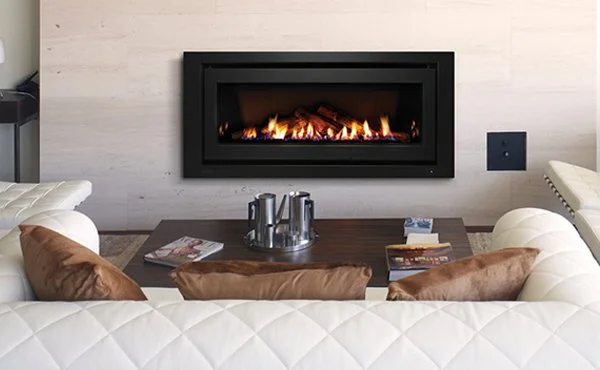
Given the significant cost of installation, the relative efficiency and the effectiveness of gas fireplaces, we suggest most people replace gas fireplaces upon expiry or if they plan on living in the home for a long time (>15 years). If the gas fireplace is the last gas appliance, this adds to the case to have it removed in order to save the daily gas service charge ($350 per year, and only increasing).
Electric Fireplaces
We were a little sceptical of electric fireplaces until we did a recent tour of fireplace shops on Swan St, Richmond. On more than one occasion, we asked “is that an electric fireplace?” unable to tell if it was real. Speaking to sales staff, electric fireplaces are becoming more popular.
Electric fireplaces are a screen with images of burning flames usually between some mouldings that look like logs. Some electric fireplaces are quite obviously a screen. These usually have the mouldings at the front and the images at the back. In our view, they look poor and it is obvious that they are not a real fireplace. Some however, are quite clever and take a degree of inspection to realise they are not real. These often have a clear screen with mouldings both in front and behind of the screen, thereby giving the fireplace some depth.
Electric fireplaces are not considered efficient. We suggest they should not be used as the primary source of heating. They are perhaps suitable for small spaces, but most likely will only be used for aesthetic purposes.
Electric fireplaces are typically a fraction of the cost of gas fireplaces. They are also cheaper to install as they do not need to be flued and cheaper to run as they do need to be serviced.
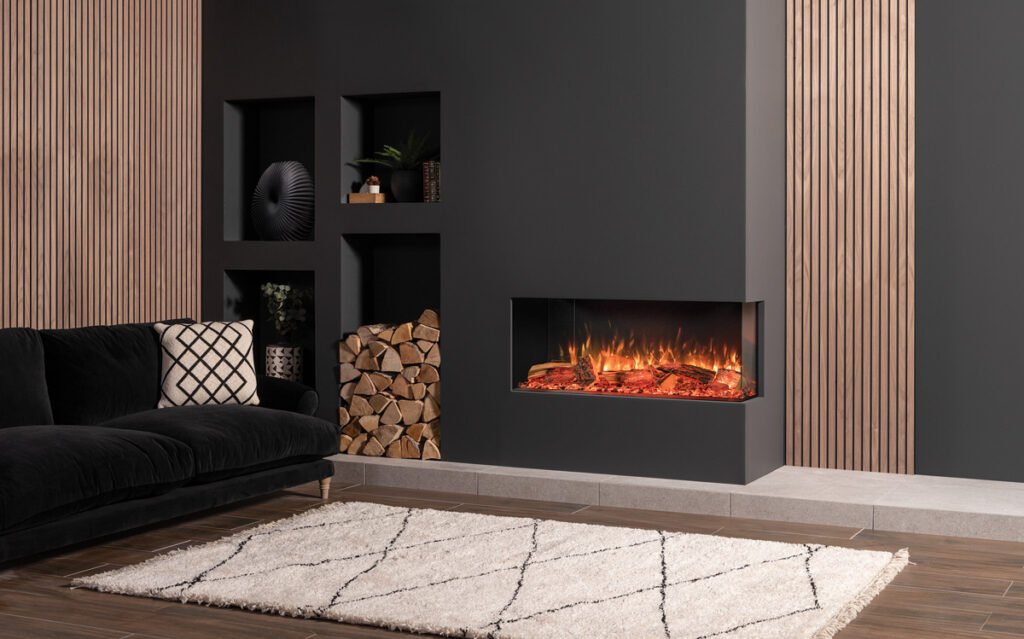
Pellet Fireplaces
Pellet fireplaces are a relatively new type of fireplace which we expect to see more as gas fireplaces are phased out.
Pellet fireplaces involve burning wood pellets. The wood pellets are loaded into a hopper which are then automatically fed into a flame. Importantly, unlike traditional fireplaces, the pellets are fed automatically, avoiding both the need to restock the fire and open the fireplace which might let out smoke and pollutants. Pellets are cleaner and safer than burning wood, with less particulates and carcinogens.
Pellet fireplaces require an electrical connection to start the fire, power a fan and to automatically feed the fire.
Pellets are made from compressed sawdust, bark and other timber leftovers. Some claim that “Pellet Heating is CO2 Neutral as pellets are made from waste timber shavings that are destined for landfill or incineration.” We don’t buy this. If you’re the one releasing the CO2, it’s not CO2 neutral. If demand increases for pellets, it’s also likely that they won’t just be made from waste timber. Electrical fireplaces powered by renewable energy are clearly more environmentally friendly.
Pellet fires are expensive to install, generally in the $5,500 – $7,500 range. We expect prices will decrease as gas powered fireplaces are phased out.
Pellet fireplaces are not as clean and green as electrical fireplaces. Electrical fireplaces can and will be green, as the grid continues to transition, even at night time when fireplaces are more likely to be used. We suggest starting with electrical fireplaces, but pellet fireplaces might have a place for those who have the budget and require a real flame.

Ethanol Burners
Ethanol burners (or “biofuel burners”) are another alternative for people looking for a flame.
Ethanol burners involve filling up an airtight fuel tank with a biofuel before each use, then setting it alight. Biofuel is a liquid made from leftovers from potatoes, corn and other biomass.
Ethanol burners have advantages of being easy to clean and not requiring any connection. No chimney or flue is required for ethanol burners. Carbon dioxide is released as the fuel is burnt, but it’s supposedly only a small, safe amount. There are minimum space requirements depending on the size of the fireplace.
Ethanol burners are not used as a primary heat source. The heat output is minimal, around one third of a typical wood heater.
The big advantage of ethanol burners above all other fireplaces is they are a naked flame – they are not enclosed behind a screen. They can look very slick.
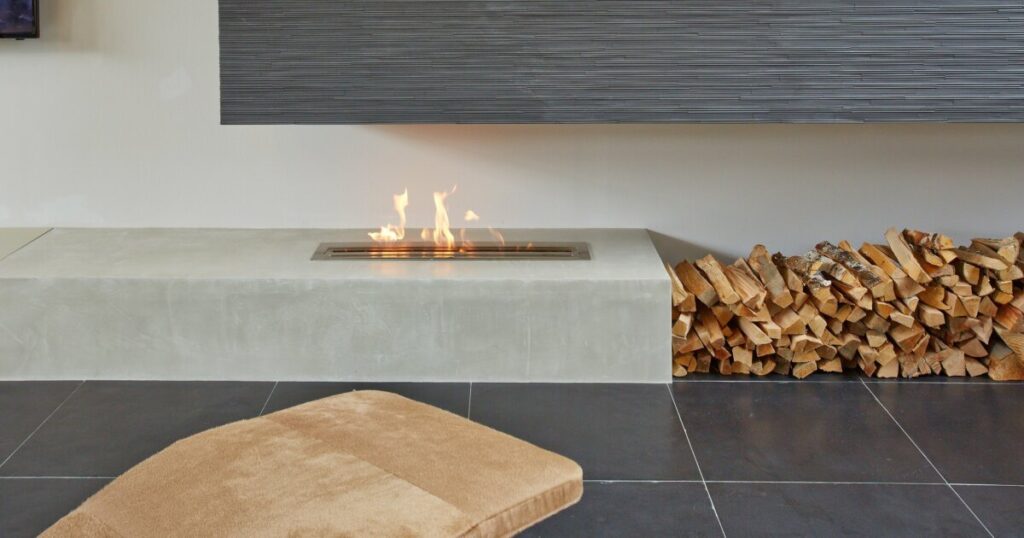
We suggest ethanol burners will have limited adoption, only for those that seek the particular look and feel they provide.
Summary
Consistent with the myriad of other changes we consider and discuss at Powrhouse, we suggest the future of fireplaces is electric. Electric fireplaces are the cleanest, safest, most affordable, have the lowest running cost and of course, are the most environmentally friendly. The only disadvantage of electrical fireplaces, currently, is for some people they still feel a little fake, not quite replicating the true fireplace feel. For those people unsatisfied with the feel of an electric fireplace, we suggest considering a pellet fireplace.
With that said, the starting question around fireplaces is frequency of use. How often do you plan on using it? If the answer is every so often, as much as we want to electrify everything, perhaps the answer is to keep the status quo, and consider an electric alternative either when the current solution is approaching its end of life, or if you plan on living in the home for a long time.
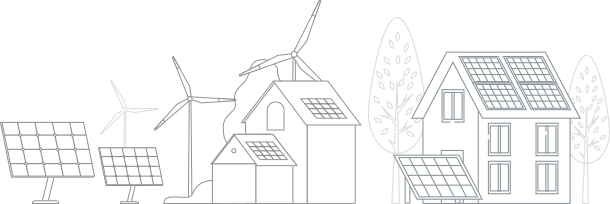
 Subscribe to Our
Subscribe to Our